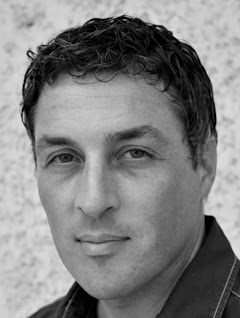Beat
I cover Africa, social issues, conflict, post-conflict societies and Afghanistan.
One Shot

“One of my favourite images is a portrait I took of Serafin, a 17-year-old refugee from eastern Congo who had just had her hair done in a traditional style. She looks beautifully serene despite the fact that she had recently fled fighting and was in a daily struggle to survive at a refugee camp. It shows how the people of Congo may live under some of the most difficult conditions in the world, but their spirit of resilience keeps them going. The picture to me shows the human side of war.”
Profile
I learnt to photograph from my uncle. I had a camera growing up and was always interested in photography, but never thought I would end up working as a photographer. He taught me how to look at things, to see simple, telling details in everyday life.
My first assignment for Reuters was working as a text reporter based in Kinshasa, Congo, in 2001. Bit by bit, I began taking photos to accompany my written reports. I then made a trip to Darfur, Sudan, in 2004 and that’s where I really discovered the power and immediate impact of photography.
The last few years have taken a huge toll on journalists. Friends and colleagues have been wounded in Afghanistan and killed covering the wars in Libya and Syria. Those experiences leave a mark. That kind of thing makes you rethink what you are doing, the way you’re doing it, and your reasons for doing it.
I work best on longer-term, in-depth stories involving social issues. Anything where you can probe beneath the surface and reveal not only something that is happening, but why it is happening, and how. Bigger picture stuff beyond the obvious, beyond the initial headlines.
The best stories are those that challenge preconceived notions about a place or an issue, that challenge stereotypes and make people rethink their view on things.
I never have a specific audience in mind when I shoot pictures. I’m too busy thinking about what I’m trying to say.
We are constantly learning. That’s what keeps photography interesting. There’s no limit, no point where you can say you understand or know everything about it. It’s an endless exploration of the world and our own place in it.
One thing I have learnt is that photography is mostly about relationships – between people, things, places, and situations. If you’re not sure what you’re supposed to be shooting, think about the relationship of your subjects to something – another person, their location, or even to yourself. This will help you clarify in your mind what the story is about.
Often Africa gets overlooked by the media, or is viewed in a narrow, stereotypical way, but strong images can reach a broad and diverse audience and can change people’s ideas.
In terms of photography, I respect anyone who can make lasting images. Images that remain with you, or that can resonate many years later. It’s easy to get caught up in the news cycle and to take an obvious picture, something that fills the hole for that day but will be instantly forgotten. As news wire photographers, we’re on constant deadlines and must find ways to be creative in minimal amounts of time. Anyone who can do that consistently earns my respect.
Behind the Scenes

